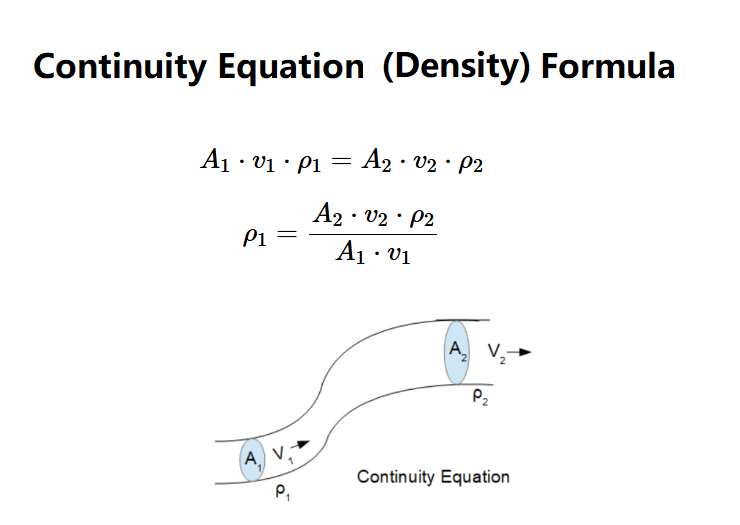 Home
Home
 Back
Back

Definition: The continuity equation expresses the conservation of mass for a fluid flowing through a pipe or channel, allowing calculation of density at one section, using the formula:
Variables:
Details: The continuity equation is fundamental in fluid dynamics to analyze and design systems involving fluid flow, such as pipes, ducts, and nozzles, especially when density varies (e.g., in compressible flows).
Tips: Enter the areas at sections 1 and 2, velocities at sections 1 and 2, and density at section 2 with their respective units. Click "Calculate" to get the density at section 1 in multiple units.
Q1: What is the continuity equation?
A: It is a mathematical statement of the conservation of mass for fluids, stating that the mass flow rate is constant through a system.
Q2: Why calculate density using the continuity equation?
A: It helps determine the density at one section of a flow when density changes (e.g., in compressible fluids), critical for fluid system analysis.
Q3: What does area represent in this context?
A: Area refers to the cross-sectional area of the flow path at different sections (e.g., pipes or ducts).
Q4: Can I use different units?
A: Yes, the calculator supports area units (m², cm², in², ft², yd²), velocity units (m/s, ft/s, km/h, mph), and density units (kg/m³, g/cm³, lb/ft³).
Q5: How accurate is this calculator?
A: The calculator is accurate based on the formula and input values, assuming steady flow. Real-world factors like turbulence or compressibility effects may introduce variations.